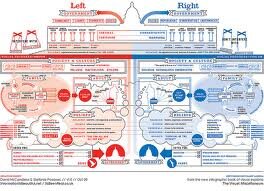Climate Change Skeptics vs. 21st Century Skills Movement in Schools
I’ve got Bill Nye on the brain. I miss seeing him on PBS and now he keeps popping up in unlikely (online) places. Recently he was featured in an Utne Reader blog post (“Bill Nye is the Archbishop of Scientism”) that described his take on the current climate change debate. Having been awarded the 2010 Humanist Award, he was extolled for his “unflappable faith in science.”In his words:"Climate change is going to affect the world in ways that are truly hard to imagine. And it’s this hard-to-imagine nature that’s costing us so dearly in time. We’re losing valuable time because of disbelief in the scientific method."
Math + Science = Future
A couple weeks ago Bill joined Al Gore and U.S. Secretary of Education Arne Duncan in a Global Online Town Hall forum called "Math, Science and the Future of Our Nation." More than a thousand students joined in the live discussion about the future of STEM (science, technology, engineering and math) education.Other panelists included astronaut Sally Ride, inventor Dean Kamen, and the stars of Discovery Channel's MythBusters. The program was just one small piece of Connect a Million Minds (CMM), Time Warner Cable's $100 million philanthropic initiative to advance education and careers in STEM fields.
Meanwhile, back at the ranch...
In October the National Journal reported that 19 of the 20 GOP Senate challengers deemed climate change a non-issue, declaring the science behind it either inconclusive or wrong. Some of those same politicians are now gunning for seats on the House Energy Committee, and pledging to attack existing environmental policies, discredit scientists, and do away with the EPA's authority to tighten emissions controls on coal, oil and other carbon fuels. This flies against the findings of the National Academy of Sciences and 97 percent of the world's climate scientists.
This flies against the findings of the National Academy of Sciences and 97 percent of the world's climate scientists.
Separation of Science and State?
As a citizen and parent, I find this disconnect deeply disturbing. As someone who writes about science, technology and trends in K-12 education, I find it mind-boggling.Science is a key focus of the 21st Century Skills movement. STEM skills are in demand around the globe, and teachers, students and professionals are being challenged to deepen knowledge and keep on the cutting edge of scientific advances.The Partnership for 21st Century Skills outlines recommended outcomes for core subjects and relevant interdisciplinary themes, e.g., Environmental Literacy. In K-12 classrooms, students engage in authentic learning online with real scientists and government groups like NOAA, NASA and, ironically, the EPA.So while students and schools are ramping up science, government officials are dumbing it down. It doesn't make sense.
Call for Alternative Energy
Today I searched on YouTube for a video clip I’d seen a couple years ago. Nye's call to invest in wind and solar energy seems especially prescient right about now. Check it out:Repower America: Bill Nye the Science Guy
Voice of reason
Okay, so here's the other reason we need Bill Nye: He's a reasonable, even-tempered guy who's trying to help us reach across the aisle here. In his words:We all have a tendency to dismiss people who believe other things, who are outsiders, or who speak other languages. I constantly have to fight the urge to say, “You don’t know what you’re talking about! That’s crazy!”My advice is just try to listen and see if you can figure out what it is that makes a person not want to believe in climate change, not want to accept that Venus is like Earth only a little different, not want to question things....So try asking instead of telling. Ask people, “What is it about science that you don’t like?”Sounds like we could all read a page from his book. Click here to read more from his entertaining acceptance speech for the 2010 Humanist Award.
Closing thoughts...
"It is through science, and the discovery of scientific processes, that I came to be a skeptic and came to really embrace critical thinking. I came to embrace the idea that you probably only get one shot at life, so, roughly, don’t blow it."
-- Bill Nye the Science Guy




 It wasn’t until after the election when pundits started parsing the role of
It wasn’t until after the election when pundits started parsing the role of 
